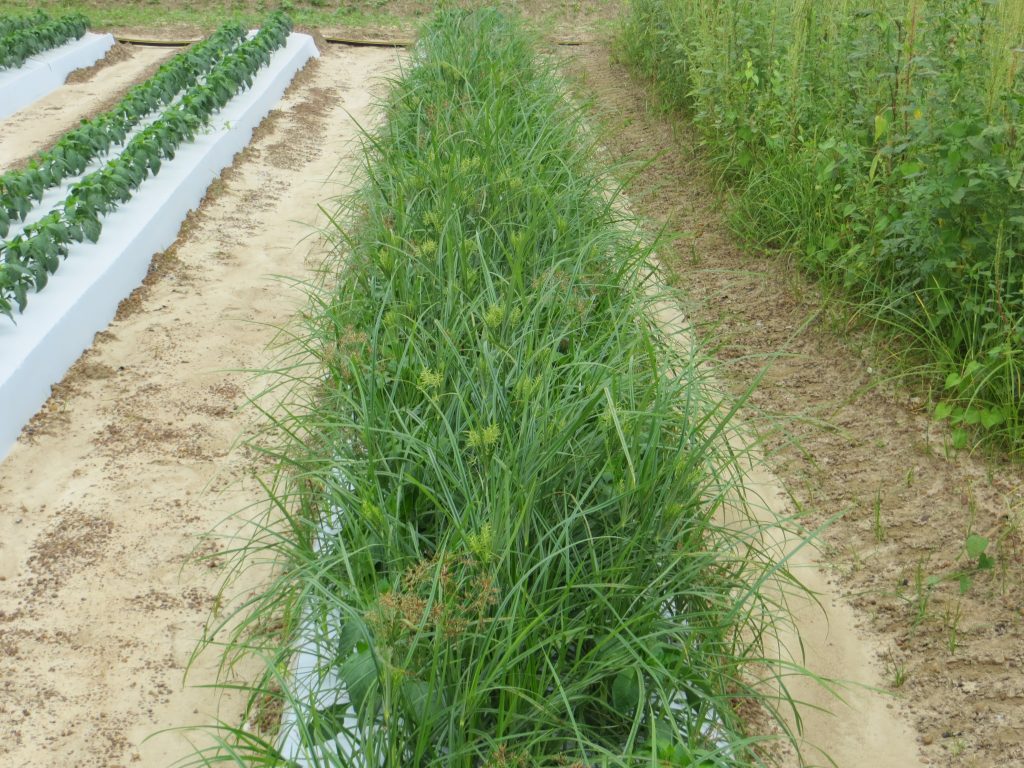
Weed management in vegetable crops across the Southeast remains a diverse and complicated practice that all producers need to be reminded of.
“There are so many components that a vegetable grower has to consider, especially when it comes to weed control. Some production systems you can use tillage. Some you can’t. Some you have plasticulture in a fumigant system. Some that you don’t,” University of Georgia Cooperative Extension weed specialist Stanley Culpepper said.
“Then when you start thinking about herbicides, we’ve been very fortunate over the last 10 years, getting our growers a lot of cool herbicide tools as a component to their management program, but when you’re a vegetable producer and going to have a crop and be in and out in 60, 80, 90 days, you’ve got to think about herbicide carry-over. I can or I can’t use herbicide ‘A’ because of what it could potentially do to the next crop, which means you’ve got to know what the next crop is going to be. You know vegetable guys as good as I do, a lot of times, they just don’t know.”
Producers have to implement the right herbicide and do so at the right rate. They have to use the right irrigation program. The tank also has to be perfectly clean.
“The complexity goes on and on for a vegetable farmer. A lot of decisions have to be made in a 12-month cycle because we could be producing three crops in a lot of our farms,” Culpepper said.
Weed Problems
Certain weed species are also problematic at different times of the year. Weeds that are normally a concern for producers in the spring are not the same as those that are plaguing producers right now. Different weeds require different management strategies.
“Lets start in the spring. In a fumigated plasticulture production system, nutsedge remains the baddest boy that there is. That’s the only weed that can penetrate through the mulch. Nutsedge is still a huge dominant player. In addition to nutsedge, what has really taken its foothold on a lot of my guys has been purslane species and a lot of ours is actually pink purslane; a bunch of different grasses that have always been here and then our amaranth species (not palmer amaranth),” Culpepper said.
“If you look at this time of year, wild raddish is the baddest boy that there is.”
Weed Management
Weed management remains key to successful vegetable production, whether you are talking about now or in the spring. Before plants are ever put in the ground, weed control needs to be a top consideration for producers. Weeds challenge and can overwhelm crops for water, sunlight and nutrients.
Culpepper said in most situations, the weeds are better competitors than the crop.
“Before you ever start a conversation, you say, ‘Look, vegetable weed control is really challenging. There can’t be any weed emerge at planting.’ It’s very likely that if we’re going to implement a herbicide program we’ve got to start it before we ever plant,” Culpepper said.
“In transplanted onion production, obviously, very important to Georgia, we have an excellent herbicide program that will be successful probably 95-plus% of the time, which is really, really good. If you wanted to grow seeded onion production in the state of Georgia, I don’t think you’ll have a chance because you can’t manage the weeds. Or if you do, you’ll spend a tremendous amount of money.
“There’s the same crop per se grown two different ways; one is very unlikely to be successful and the other is very likely to be successful with regards to weed management.”
“If you wanted to seed cabbage, because of wild raddish, you’re in trouble. But if you want to transplant cabbage, I have a herbicide you can put out before you transplant, and I’ll take the wild raddish out.
“There’s two examples, exact same crop, of how you want to process or implement your program will determine how successful you’ll be.”









